If you’re looking for a cheerful addition to your garden, look no further than the Pansy. This flower is available in many colors, making it easy to find one that will complement your existing planting scheme. They are known for their large, showy blooms and bright colors. Pansies are a type of flower that is often used in landscaping and gardening. If you’re interested in growing Pansies from seed, you should know a few things to start. With proper care, Pansies will thrive and provide color to your garden all winter.
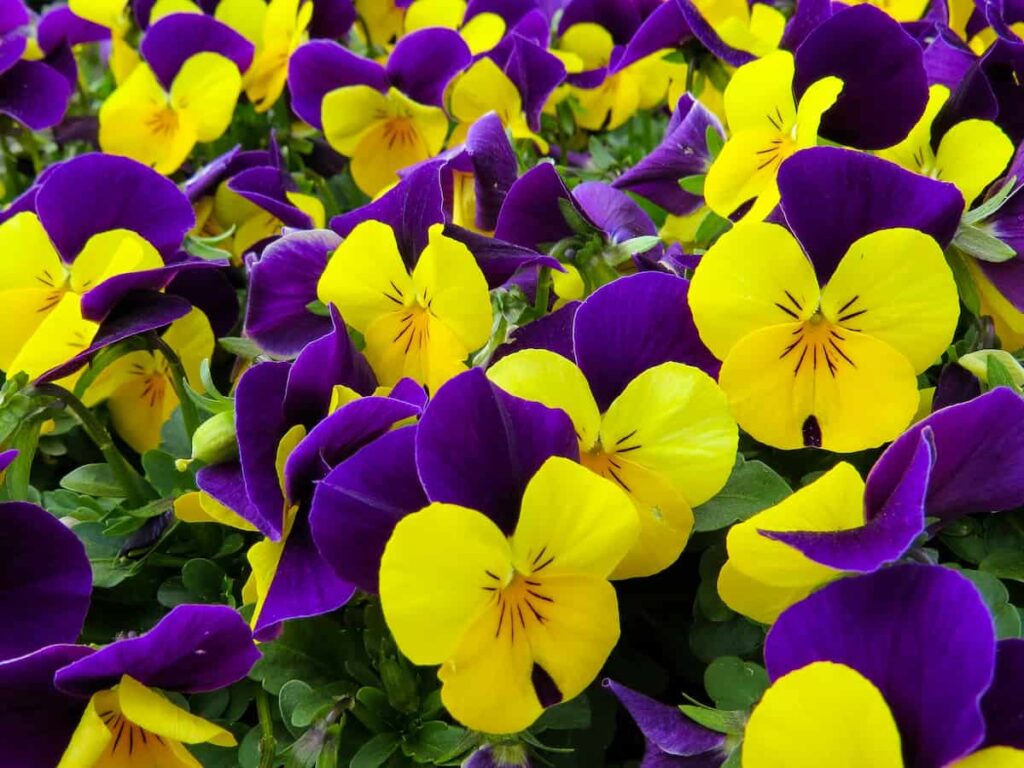
How to grow Pansies from seed
How long does a Pansy take to flower from seed?
- Pansies are one of the easiest flowers to bloom from seed. Your Pansy seeds should be germinated within 10 to 21 days if you sow them when the seeds in the bedding start to develop. Pansies take another six weeks to grow from seed-sized plants to transplantable ones.
- Transplant them into 5 centimeters spaced trays once they break the surface of the soil, and then you’ll need to acclimatize them before planting them outside. Afterward, they usually require another six weeks to establish their permanent site. Once they’re finally blooming size, cold weather will come before they’ve had the chance to bloom.
Best time to plant Pansies
- Pansies are one of the earliest flowers to bloom in spring. They can tolerate frost and cold weather, making them ideal for planting in early spring. Pansies can also be planted in fall and will bloom the first frost.
- Plant Pansies in borders or pots during the month or early October to ensure they have ample time to grow strong roots and flowers. One of the best things that makes them special is that they’re easy to grow and can last from September to April or May.
Tips for growing Pansies faster
To make your Pansies grow faster, you must give them the right environment and care. They need plenty of sunlight and moist, well-drained soil. To promote root and plant growth, fertilize your plants every two to three weeks with a liquid fertilizer. Bone meal, a phosphorus fertilizer, can also help the plants flower. To encourage blooming, deadhead blooms you have or even trim off any leggy parts of the plants.
In case you missed it: Cool-season Plants for Pollinators: Vegetables, Flowers, Fruits, Shrubs, and Herbs
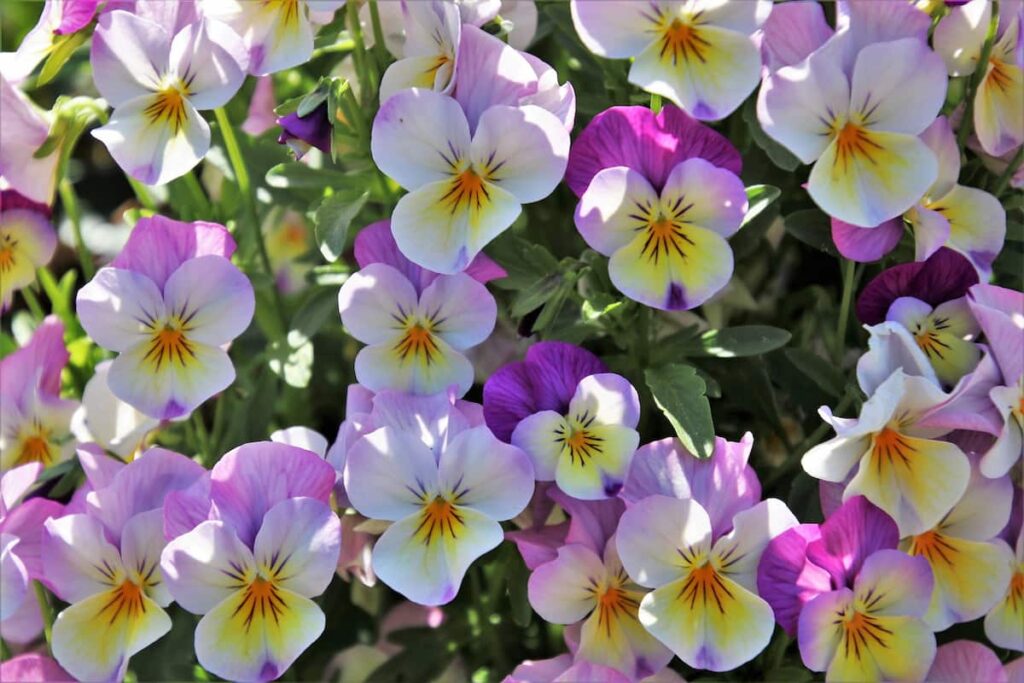
Will Pansies rebloom if cut back?
- You can make Pansies bloom again by clipping off the seed pods, which will fool the Pansies into thinking it’s time to bloom again. Cut back any excess growth and clip off faded or dead flowers still holding on or wilting.
- Pansies will rebloom if cut back but may not bloom as profusely. Cut the plants by about one-third after the first flush of blooms fades to encourage reblooming. Feed with a balanced fertilizer and water regularly. Deadhead spent flowers to promote continued blooming.
Water requirement for growing Pansies
- A common reason gardeners have trouble growing Pansies is that they don’t get enough water. If the temperature is warm, they may need to be watered twice daily. Pansies will stay healthy and vibrant if they dry out between waterings. Best to water your Pansy regularly through the growing season.
- When growing Pansies from seed, water is an essential factor to consider. Pansies need moist soil to germinate, so it’s essential to keep the soil moist but not saturated. Water the soil lightly every day or as needed to keep the top inch of the soil moist. Once the seedlings emerge, continue to water regularly, ensuring the soil doesn’t dry out. Pansy seeds should be watered about once a week or whenever the soil looks dry. When watering, ensure to soak the soil thoroughly.
The life cycle of a Pansy
Pansies are biennials, which means that they survive for two years. When the 2-year growing cycle is complete, Pansies die back completely. They typically bloom from spring to summer, but their flowers may last longer if the plant is kept in a cool environment. After blooming, the Pansy produces seed pods that contain its seeds. Once the pods mature and dry out, the seeds can be collected to grow new Pansies.
In case you missed it: 42 Key Rules for Container Gardening: From Planning to Reducing Production Cost
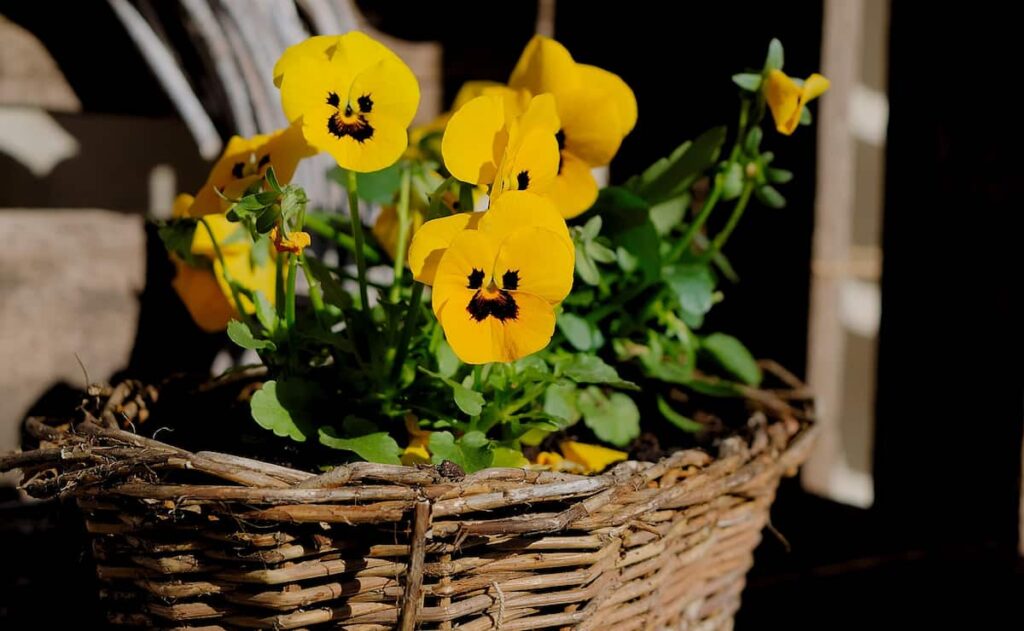
Sun requirement for growing Pansies
- Pansies require at least six hours of sunlight daily in warmer regions. You should protect Pansies from the full sun during the hottest part of the day. Too much sunlight will stop the Pansies from blooming, so keep an eye on them.
- Pansies are sun-loving plants, but they can also tolerate some shade. They prefer well-drained soil and will bloom best in full sun. Pansies can be planted in the spring or fall and bloom throughout the summer.
Germinating Pansy seeds indoors
- Pansies can be grown indoors during winter months. Growing Pansies as houseplants is a way to continue to enjoy the plant and help it survive outside of its growing range. It may be more challenging to grow Pansies as houseplants, but it’s possible.
- To start, plant your Pansy seeds in potting soil in a pot or tray. Make sure the tray has drainage holes so the water can drain out. Next, water your seeds well and place them in a sunny spot. Keep the soil moist; you should see sprouts in about a week or two.
What do you do with Pansies when they finish flowering?
- Remove any spent blooms or extra growth to keep the plant healthy when the plant blooms. The Pansy seed will remain dormant until Spring. The flowers will die soon, and you can remove them soon. Pinching off fading flowers ensures that the individual stays strong. Simply take a finger and thumb and pinch the faded bloom at the stem just below the leaf to have it removed. It’s essential to check Pansies daily for spent flowers, as they will stop blooming if it’s not done.
- By letting your Pansies go to seed, you’ll be able to enjoy them again next year. Let the flowers die on the plant and wait for the seed pods to form. Once they’re dry, you can harvest them and store them until it’s time to plant again.
In case you missed it: 45 Key Rules for Backyard Gardening: From Planning to Reducing Production Cost
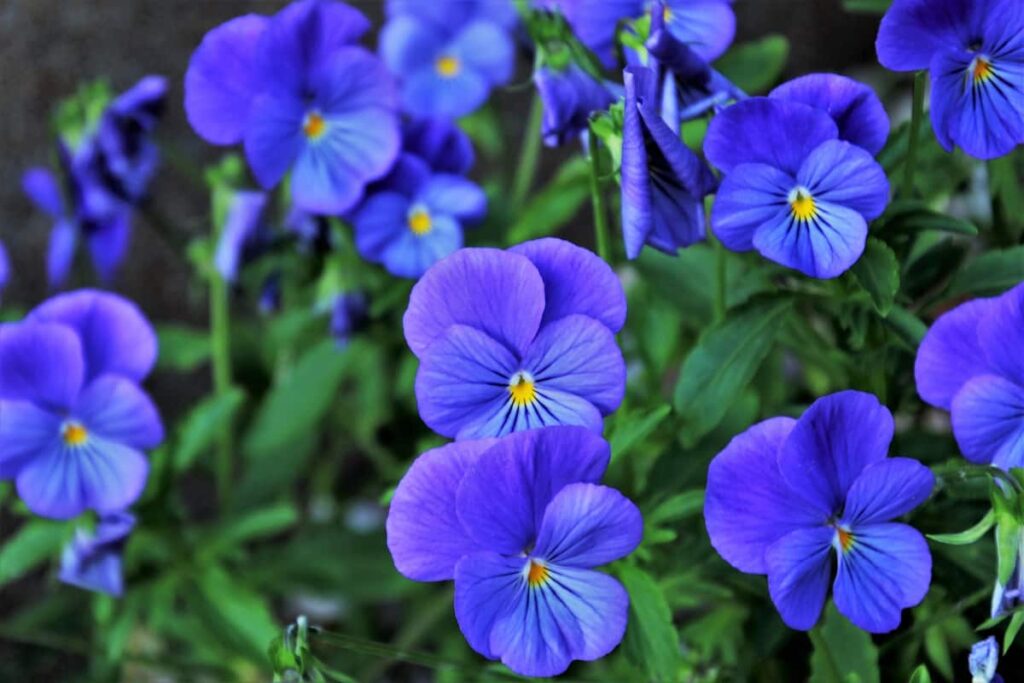
The best soil for growing Pansies
- Don’t let your Pansies’ roots get too close to the edge of the pot. Ensure at least 4 to 5 inches of soil space and adequate drainage. If your plants’ feet get wet, they’ll start getting root rot, leading to other diseases later.
- Pansies grow best in a wide range of soils. However, choosing light and well-drained soil is essential for the best results. Peat Moss or Vermiculite amendments help to lighten heavy soils and improve drainage. Adding sand to your potting mix will also help with drainage. Perlite is another good amendment for improving drainage and aeration in heavy soils. Once you’ve selected suitable soil for your Pansies, water them regularly and fertilize them monthly for the best results.
How many times will Pansies bloom?
- Pansies will bloom in the fall and again in the spring, from April to June, before things get too hot. They grow best when night-time temperatures range from 8°C to 15°C and daytime temperatures are between 15°C to 24°C. During the winter, most Pansy varieties will continue to grow leaves, but they won’t bloom anymore because it’s not warm enough.
- Pansies are one of the earliest blooming flowers and will continue to bloom throughout the spring and summer. They are not particular about soil type or pH but prefer a sunny location. Pansies will re-bloom if spent flowers are removed.
Growing Pansies in pots
- To grow Pansies from seed, you must start them indoors in pots. You can sow the seeds in late winter or early spring, and they should germinate within two weeks. Once the seedlings have emerged, they need to be thinned out so that each pot only contains one or two plants.
- Generally, with three or four plants in 10- to 12-inch planters and six to eight plants in 16- to 20-inch, you can fill out containers while leaving room for the plant.
- Pansies can be transplanted into larger pots as they grow and must be watered regularly. Pansies do not like to be too wet or dry. When the plants are big enough, they can be moved outdoors. Pansies prefer cool weather and bloom best when temperatures are between 15°C to 23°C.
In case you missed it: How to Grow Dill from Seed to Harvest: Soil, Propagation, Planting, and Care
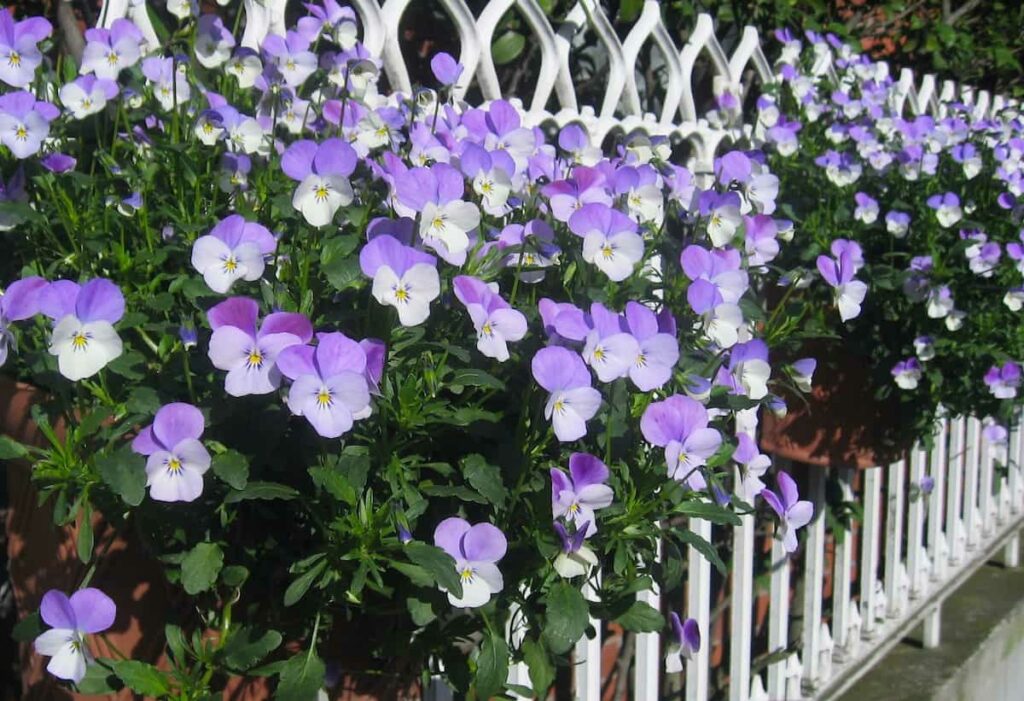
The best fertilizer for growing Pansies
- Pansies can be fertilized with summer annual plant food, like 20-20-20, or a slow-release/granular fertilizer. Pansies prefer a lower nitrogen fertilizer. This is because too much nitrogen will produce lots of green growth and short flowers. A fertilizer with an NPK ratio of 5-10-5 or 5-10-10 is ideal. You can also use a slow-release fertilizer or compost to feed your Pansies.
- Many gardeners prefer to start their Pansy plants from seedlings, but you can also grow them from seed. To start your Pansies from seed, you must use a good quality fertilizer. A good quality fertilizer will contain all the nutrients your Pansy plants need to thrive. It is also essential to choose a slow-release fertilizer so that your plants are not burned by too much nitrogen.
- Over-fertilizing can damage your plants, so it is essential only to apply the recommended amount. Once your Pansies are established, you can reduce the fertilizer you use. Pansies are relatively low-maintenance flowers, so they do not require much fertilization once they are established.
What plants pair well with Pansies?
- Create instant results with potted plants by spacing Pansy plants close together or giving them more room to grow. Consider mixing things up by adding leafy vegetables such as Lettuce, Kale, or Herbs.
- Hardy annuals are often a great way to combine with Pansies, like Dusty Miller or Dianthus. Pansies also pair well with Chrysanthemums and other popular autumn flowers, like Marigolds.
Why are my newly planted Pansies dying?
- Pansies are one of the most popular springtime flowers, and they can add a splash of color to any garden. However, sometimes newly planted Pansies can die for no apparent reason. Pansies must be watered regularly, especially when they’re first established. If they don’t get enough water, their leaves will wilt and eventually die. On the other hand, if you overwater Pansies, their roots will rot, and they’ll also die. Make sure you’re watering them only a few times a week should be plenty.
- Pansies need some sun to thrive, but too much sun can scorch their leaves and cause them to die. Likewise, if they’re planted in an area too shady, they won’t get enough sun to grow properly and will eventually die. Pansies need soil that’s neither too rich nor too poor in nutrients; either way, it can lead to growth problems and the plant’s eventual death.
In case you missed it: Easy to Grow Orchid Plants for Beginners: Soil, Propagation, Planting, and Care
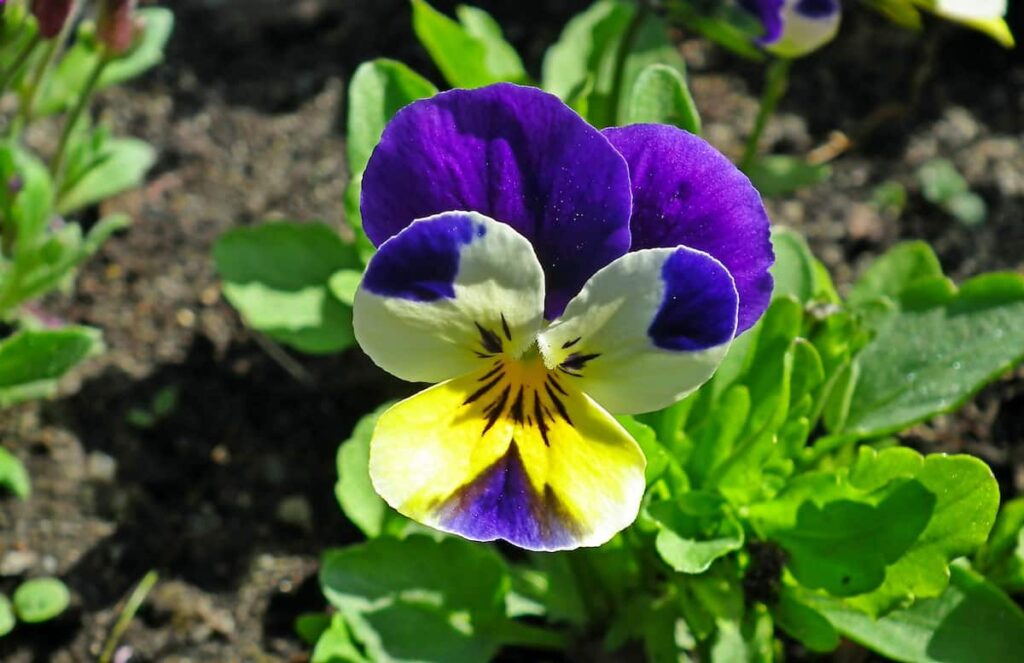
Harvesting of Pansies
To harvest Pansies, please wait until the flowers bloom and cut them at the stem. Be sure to leave a little stem on the flower so it can continue growing. You can also deadhead the flowers by cutting off the spent blooms. This will encourage the plant to produce more flowers.
Conclusion
Pansies are among the most popular flowers because they come in many colors. You can find Pansies in almost any color, from traditional purple and yellow to white, red, blue, and black. Growing Pansies from seed can be a fun and rewarding experience. They are relatively easy to grow and can add color to any garden. With patience and basic knowledge, you can grow your Pansies from seed in no time.
- How to Grow Tomatoes Organically at Home: A Comprehensive Guide
- Organic Gardening on a Budget: Low-Cost Methods and Materials
- Gongura Seed Germination and Planting Methods
- Cabbage Seed Germination and Selection
- Broccoli Seed Germination and Selection
- Asparagus Seed Germination and Variety Selection
- Seasonal Flower Gardening: Best Practices for Spring, Summer, Fall, and Winter
- How to Grow Hibiscus from Flower
- Plantation Ideas for Home Decoration: A Beginners Guide
- Flower Garden Designs and Layouts for Beginners
- Planting and Spacing Techniques in Papaya: A Beginner’s Guide
- Growing Gold: Essential Techniques for Planting Pineapples
- How to Make Kalanchoe Plant Bushy: Home Remedies and Solutions
- 11 Reasons Why Your Gardenia is Not Blooming: Home Remedies and Solutions
- Eco Elegance: The Guide to Designing a Drought-Tolerant Landscape
- Gardening on a Slope: Strategies for Hillside Landscaping
- Nourish and Flourish: Top Organic Mulches for Thriving House Plants
- Everything You Want to Know about Indian Mogra Flower: Discover Uses and Growing
- Green Thumb Success: Expert Tips for Cultivating Greenhouse Pumpkins All Year Round
- Maximize Growth & Flavor: The Ultimate Guide to Companion Planting in Herb Gardens
- How to Control Rhododendron Problems Naturally: Home Remedies and Organic Ways to Fix Them
- Natural Magic: The Remarkable Benefits of Cinnamon for Plants
- Best Steps to Revive Dying Tulip with Natural and Organic Treatment
- 10 Reasons Why Your Angel Trumpet is Not Blooming: Remedies and Treatment
- How to Fix Periwinkle Leaf and Flower-Related Problems: Natural Remedies and Solutions
- How to Fix Zinnias Leaf and Flower Problems: Discover Natural and Home Remedies
- Organic Steps to Induce Lemon Tree Flowers: A Comprehensive Guide
- Bloom Booster: Crafting the Perfect Homemade Bougainvillea Fertilizer
- Optimizing Growth: A Guide to Applying NPK Fertilizer for Potted Plants
- 10 Best Homemade Fertilizers for Rubber Plant: DIY Recipes and Application Method
- How to Boost Female Pumpkin Flowers: Effective Steps for More Flowers and High Yields
- Transform Your Indoor Garden: Top Benefits of Pink Salt for Houseplants
- 10 Best Homemade Fertilizers for Peacock Plants (Calathea): Easy DIY Guide
- Unlock Blooms: 9 Reasons Why Your Potted Chrysanthemum is Not Blooming
- 8 Reasons Why Your Potted Hibiscus is Not Blooming: Fix it with Simple Solutions
- Unlock Blooms: 9 Key Reasons Your Potted Frangipani Won’t Flower